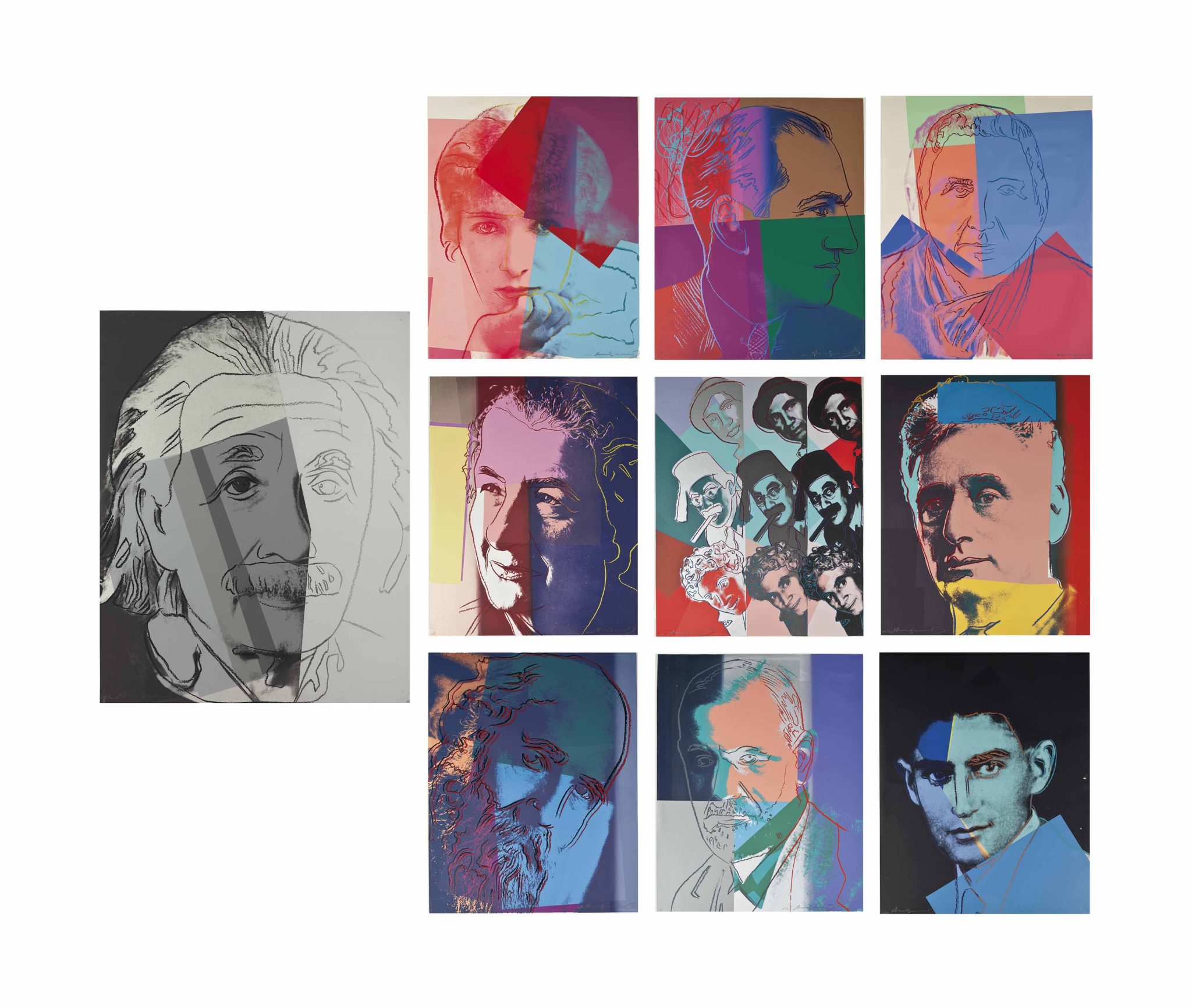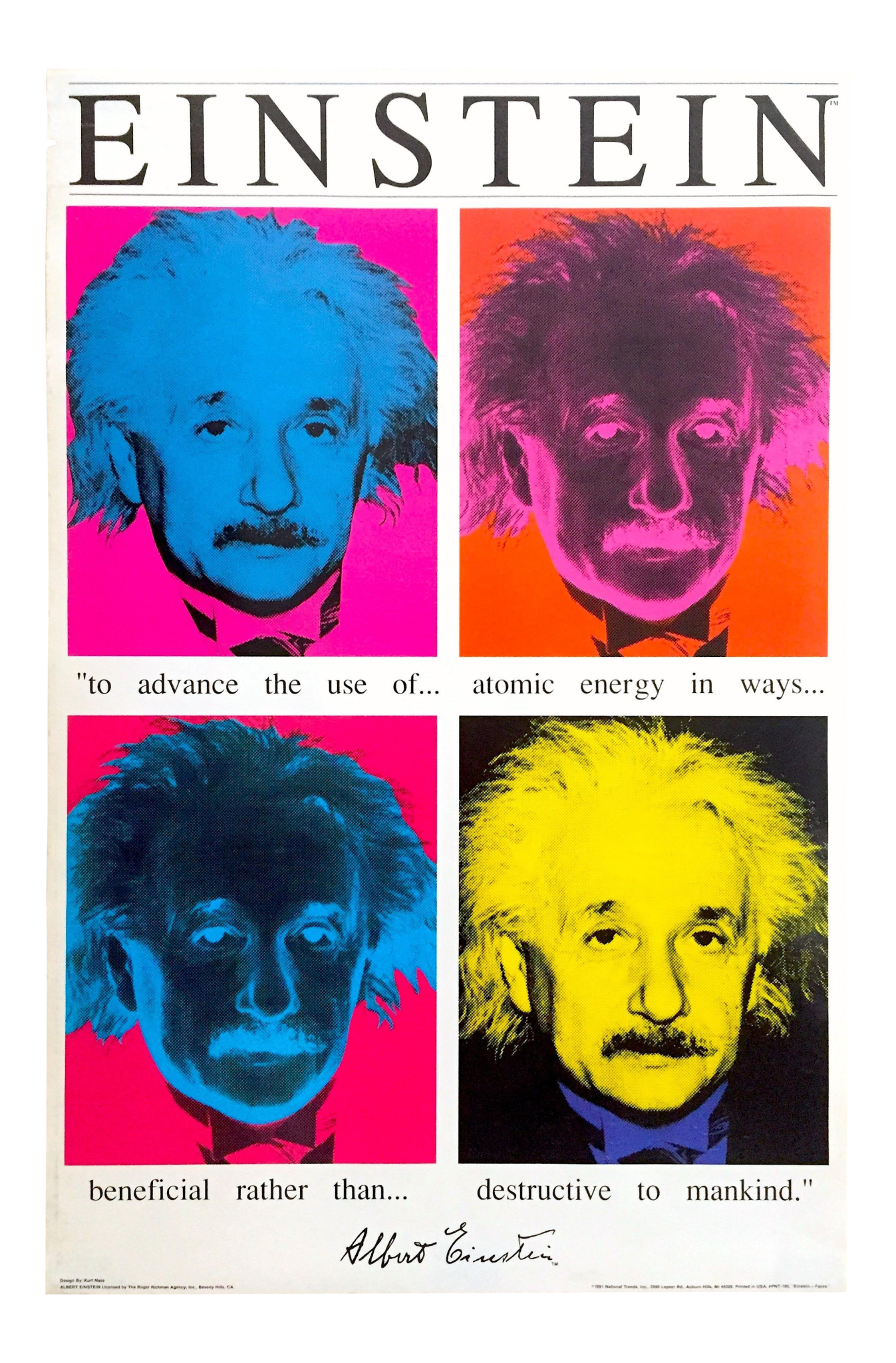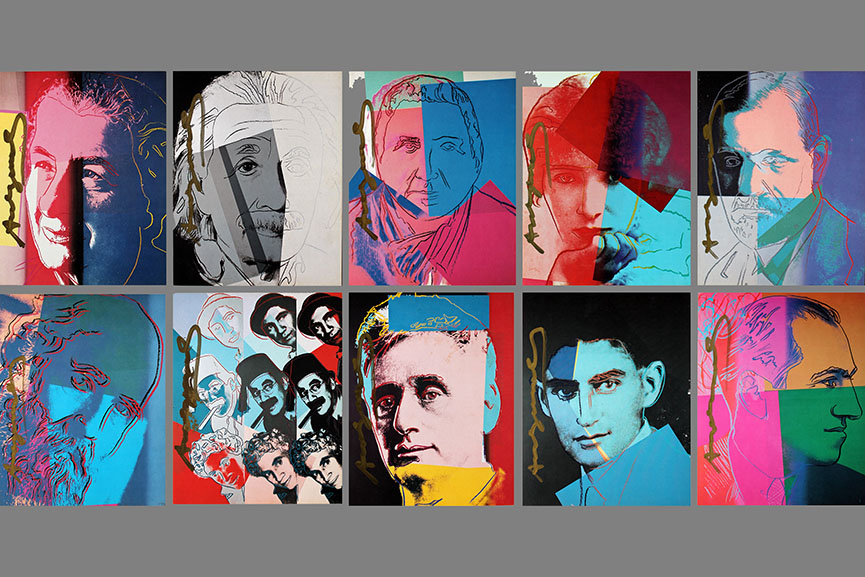Albert Einstein, one of the most well-known and influential scientists of the 20th century, has been immortalized in countless forms of art, but perhaps one of the most recognizable is Andy Warhol’s Albert Einstein 229 painting.
Created in 1980 as part of Warhol’s “Ten Portraits of Jews of the Twentieth Century” series, the painting features a bold and colorful image of Einstein. The vibrant orange background contrasts with the shades of purple, blue, and green that make up his face, while his signature wild hair and mustache are depicted in bold black lines.
Warhol, known for his pop art style, often used repetition and bright, bold colors in his work. In this series, he aimed to celebrate influential Jewish figures of the 20th century, including Einstein, Sarah Bernhardt, and Golda Meir. By placing these individuals in a modern, colorful context, Warhol sought to make their legacies relevant to a new generation of viewers.

Einstein, born in 1879 in Ulm, Germany, was known for his groundbreaking work in physics, particularly the theory of relativity. He was awarded the Nobel Prize in Physics in 1921 for his discovery of the law of the photoelectric effect. Einstein also played a key role in the development of the atomic bomb, but later became an outspoken advocate for peaceful uses of nuclear energy.
Einstein’s scientific achievements, combined with his witty humor and humanitarian ideals, made him a beloved and iconic figure, even after his death in 1955. Warhol’s Albert Einstein 229 painting captures some of the essence of this larger-than-life persona, while also infusing it with his own artistic style.
Today, Einstein’s work and legacy continue to influence scientific and philosophical thought, while Warhol’s art remains a quintessential representation of pop art. Together, they embody the power and potential of human creativity and ingenuity, transcending time and inspiring generations to come.





